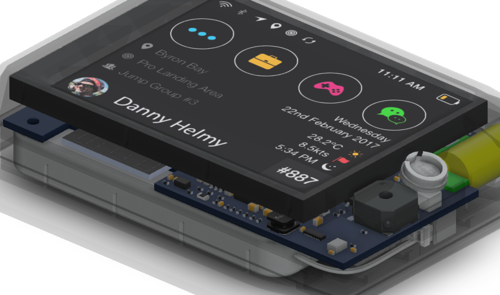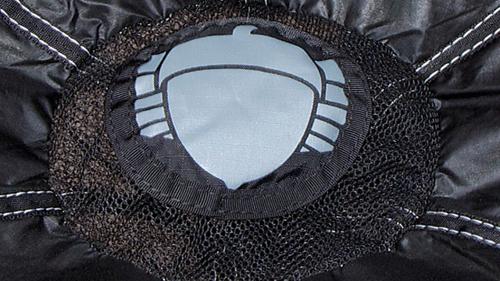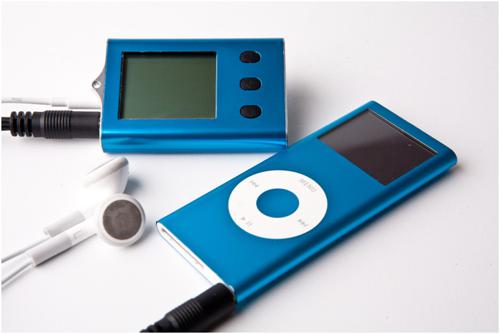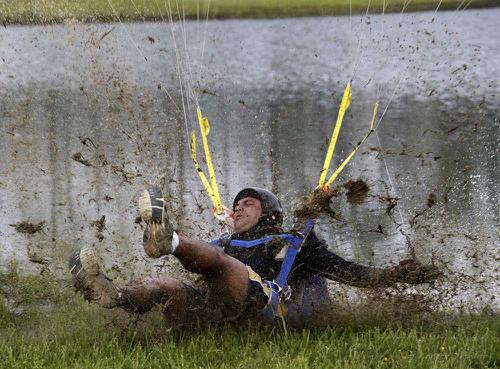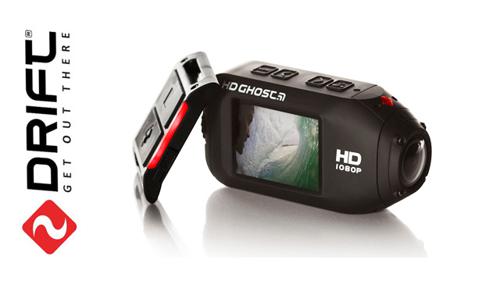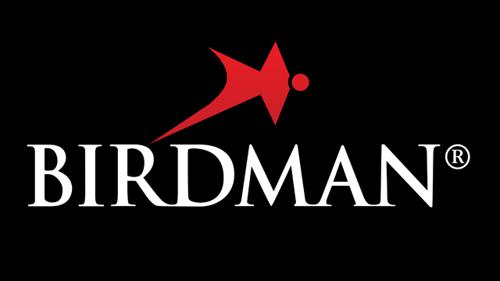With all the recent issues that have been brought up by the Argus AAD ban by multiple container manufacturers, I wanted to make sure that everyone knows that while most modern AAD’s have a similar design, based on that of the CYPRES1 which was introduced in the early 90’s, they all have very unique differences, and these differences can cause major issues if you are unaware of them. Also, this is a good time to remind people about best practices to use if you have an AAD in your rig.
Because of safety concerns right now it looks like most container manufacturers have
at least temporarily prohibited the ARGUS in their containers, so this article predominantly relates to the CYPRES and the VIGIL. If the ARGUS is approved again for most containers, updated information will then be made available. Although not widely seen, there are also the FXC Astra (electronic with cutter), and the FXC-12000, an older bulky mechanical pin-pulling device. Introduced at the recent PIA Symposium, the MARS M2 from the Czech Republic and being imported by Alti-2, is another newcomer to the AAD market, which may be available sometime this year once the container manufacturers approve it for use.
All the modern electronic AAD’s currently on the market in their “Expert mode” work by activating a cutter that severs the reserve closing loop when the user is falling at or greater than a given speed (typically around 78 MPH or faster) and at or lower than a given altitude (typically around 750 feet). This cut closing loop should then allow the reserve to begin its opening sequence. This is all the AAD will do (cut the loop). If the reserve has been correctly packed, the cutting of the loop should initiate the reserve opening sequence, and hopefully a reserve canopy will open between 200-500 feet AGL (barring a pilot chute hesitation, etc).
KNOW YOUR EQUIPMENTAs always, consult the user manual for your specific make/model, and discuss any of your AAD questions with a qualified rigger. We are lucky to have SSK Industries, Inc., the US service center for CYPRES units located in Lebanon, Ohio, so please feel free to contact SSK for any CYPRES questions also.
The first major difference between AAD’s is “active” mode. This is the altitude above the ground that the AAD would allow itself to activate if the conditions were met for an activation. The CYPRES\CYPRES2 arms at 1500 feet AGL. The VIGIL\VIGIL2 will move to active mode at 150 feet AGL. Both of these have different rationale behind their decisions. While a CYPRES will not active if the airplane only gets to 900 feet and you have to do an emergency exit, a VIGIL moves into active mode at a lower altitude and this has caused issues when the door of the airplane accidentally opened which caused a pressure difference that triggered activation. Counterpoint to this for the VIGIL is if you exit at 1200 feet and hit your head on the tail the unit is already in active mode and is able to potentially fire to start the reserve activation sequence. (Note that CYPRES is armed if you climb to arming altitude, then descend lower prior to exit.) The CYPRES also disarms when it goes below ~ 130 ft. AGL. The VIGIL will also disarm at ~130 feet on the way down
A second major difference is in the shutdown timing. A CYPRES until has a hard shutdown at 14 hours after the startup sequence. This means even if you are on the airplane climbing to altitude or in freefall when that time is reached the unit will shut down. In this method of shutdown timing you must do a manual shutdown and restart of the unit if you are approaching the 14 hours since startup to ensure that the unit will remain active for any skydives that you are intending on doing. The VIGIL checks to see if it is at its “Ground Zero” altitude and if you are 150 feet or higher or lower than that altitude via pressure readings then the unit will remain on until you reach “Ground Zero” altitude again. This can cause an issue if you take your rig home and you live more than 150 feet above or below the field elevation at the airport since the VIGIL might remain on for days or weeks. Specifically this can cause issues if you are frequently traveling and leave the DZ at the end of the day and travel to a different DZ the next day since the unit might still be on and is using the altitude of the other airport as its “Zero” point. This could cause the unit to fire much higher or lower than expected. As a reference point Middletown Hook Field, the home of Start Skydiving is at 650’ MSL, Columbus (CMH) is at 815’ MSL, Indianapolis (IND) is 797’ MSL and Covington (CVG) is 896’ MSL. All of these areas may be at a large enough altitude difference that you may need to manually turn your VIGIL off when you leave the dropzone to keep it turned on until it is returned to Start Skydiving. Leaving the VIGIL on for extended time periods can lead to the battery going dead prior to the expected life of the unit or the unit failing to realize the difference in “Zero” altitude if you travel to another dropzone.
A third difference is the way that the altitude reference offset data is stored in the units.. If you are doing an offsite demo jump, or jump at a DZ with an airfield with an elevation different from the landing area, there exists an option that, if you know you are going to be landing at a location that is hundreds of feet higher or lower then where you are taking off from, allows you to adjust the AAD so it knows about that difference, so it still will activate at ~750 feet above the ground at the intended landing location. Because of the CYPRES automatic weather correction feature, it will re-zero itself on the way back to the take-off location, so it is necessary to switch it off and reset the DZ altitude reference prior to each jump at the remote airfield. At the end of the self-test procedure, CYPRES-2 displays the previously set altitude offset so that it can be easily selected again. The CYPRES(1) unit does not have a memory of a programmed offset and will forget the difference each time the CYPRES is turned off. CYPRES automatically tracks weather changes throughout the day, and if the airfield and landing site are nearby and at the same elevation there is no need to reset it every time you need to re-zero your altimeter. If you travel by car back to the DZ, or walk back from a different elevation after landing with your CYPRES, it is recommended to reset it (switch off/on). As the VIGIL does not automatically track weather changes in the same way, it will retain the offset information in its memory until you go back into the menu and change it back to zero even if the unit is shut down or it reaches its 14 hour point and shuts off. The upside is if you are frequently jumping at a location that involves needing to input an offset the offset is saved for you. The downside to this is if you program in an offset and forget to reset it you could have the unit activating incorrectly since it thinks it still needs the offset. The VIGIL also recommends resetting the unit if you travel with it in a car or walk back from a different elevation.
Yet another difference is the “Function” of the AAD. CYPRES units come in four versions that are easy to tell the difference of at a glance. CYPRES Expert units have a Red button, Speed units have a Red button that has SPEED printed on it. Student units have a Yellow button and a Tandem unit has a Blue button. Each of these models has unique activation parameters so refer to the user manual for specific information. A CYPRES-2 unit can be reprogrammed by SSK or the factory to change its functionality and it’s done at no charge. The VIGIL is a multifunction device that allows for the user to change it from “Expert” to “Student” or even “Tandem” in the startup sequence.) You do need to make sure the unit is in the right mode to get the correct activation parameters loaded. You can tell the mode the VIGIL is in by looking at the display once the unit is turned on and it will tell the currently active mode. Tandem Instructors especially need to ensure if the rig they are about to jump has a VIGIL installed that it is in the right mode since having the unit activate at the EXPERT or STUDENT parameters may not ensure the canopies will open in time to save your life.
There are additional differences so please read your User Manual to really understand all the details of your AAD. While we try to use the “Set it and Forget it!” attitude towards AADs, they are somewhat complicated devices that you need to understand the details of, so that you can properly use the unit if it is installed in your container.
Modern AAD’s since they were introduced with the CYPRES1 in 1991 have saved hundreds of lives. They have also caused issues and even fatalities when inducing two canopy out situations at times where jumpers have opened their main canopies very low or other complications. AAD’s have a very high success rate when needed but they are not 100% flawless either. Just by having an AAD installed does not mean that you are now perfectly safe. Many jumpers inform their friends and families that “I have this little device that will pull for me if I don’t” as a way of reassuring them around the dangers of skydiving. While it is true that having an AAD does increase your safety factor it is not to be relied on and the true risk involved in skydiving does need to be considered.
Reminder of Best Practices for use of your AAD no matter which brand you use:
1) Only turn your AAD on at the takeoff site, do not turn it on at home then drive to the DZ since it will think your home is “Zero Altitude” and may fire higher or lower than expected because of this.
2) If a “multimode” device, ensure the unit is in the correct “Mode” for the skydive you are about to do.
3) Notice any errors during the start up or during operations during the day and alert your rigger before completing another jump on the unit.
4) Be aware of the shutdown timing on the AAD and if needed turn it off before you leave at the end of the day. Also be prepared to reset the unit if you will be doing more than 14 hours of jumping (Night jumps especially are of note on this)
5) Only configure offset information into the unit if you are truly jumping at an altitude different than you are taking off from. Also be sure you know whether the unit retains the offset information or not.
CYPRES2 User Manual:
http://www.cypres-usa.com/userguide/CYPRES_2_users_guide_english.pdf
or
http://www.cypres.cc/index.php?option=com_remository&Itemid;=89&func;=download&id;=182&chk;=5ca53a980b98700d976eb51f9e1fc9c3&no;_html=1〈=enVIGIL User Manual: http://www.vigil.aero/files/images/ENGELS___DP_JUN_2010.pdf
VIGIL SB on this topic: http://www.vigil.aero/files/images/Information_Bulletin___Airborne_Status_.pdfWith all the recent issues that have been brought up by the Argus AAD ban by multiple container manufacturers, I wanted to make sure that everyone knows that while most modern AAD’s have a similar design, based on that of the CYPRES1 which was introduced in the early 90’s, they all have very unique differences, and these differences can cause major issues if you are unaware of them. Also, this is a good time to remind people about best practices to use if you have an AAD in your rig.
Because of safety concerns right now it looks like most container manufacturers have
at least temporarily prohibited the ARGUS in their containers, so this article predominantly relates to the CYPRES and the VIGIL. If the ARGUS is approved again for most containers, updated information will then be made available. Although not widely seen, there are also the FXC Astra (electronic with cutter), and the FXC-12000, an older bulky mechanical pin-pulling device. Introduced at the recent PIA Symposium, the MARS M2 from the Czech Republic and being imported by Alti-2, is another newcomer to the AAD market, which may be available sometime this year once the container manufacturers approve it for use.
All the modern electronic AAD’s currently on the market in their “Expert mode” work by activating a cutter that severs the reserve closing loop when the user is falling at or greater than a given speed (typically around 78 MPH or faster) and at or lower than a given altitude (typically around 750 feet). This cut closing loop should then allow the reserve to begin its opening sequence. This is all the AAD will do (cut the loop). If the reserve has been correctly packed, the cutting of the loop should initiate the reserve opening sequence, and hopefully a reserve canopy will open between 200-500 feet AGL (barring a pilot chute hesitation, etc).
KNOW YOUR EQUIPMENTAs always, consult the user manual for your specific make/model, and discuss any of your AAD questions with a qualified rigger. We are lucky to have SSK Industries, Inc., the US service center for CYPRES units located in Lebanon, Ohio, so please feel free to contact SSK for any CYPRES questions also.
The first major difference between AAD’s is “active” mode. This is the altitude above the ground that the AAD would allow itself to activate if the conditions were met for an activation. The CYPRES\CYPRES2 arms at 1500 feet AGL. The VIGIL\VIGIL2 will move to active mode at 150 feet AGL. Both of these have different rationale behind their decisions. While a CYPRES will not active if the airplane only gets to 900 feet and you have to do an emergency exit, a VIGIL moves into active mode at a lower altitude and this has caused issues when the door of the airplane accidentally opened which caused a pressure difference that triggered activation. Counterpoint to this for the VIGIL is if you exit at 1200 feet and hit your head on the tail the unit is already in active mode and is able to potentially fire to start the reserve activation sequence. (Note that CYPRES is armed if you climb to arming altitude, then descend lower prior to exit.) The CYPRES also disarms when it goes below ~ 130 ft. AGL. The VIGIL will also disarm at ~130 feet on the way down
A second major difference is in the shutdown timing. A CYPRES until has a hard shutdown at 14 hours after the startup sequence. This means even if you are on the airplane climbing to altitude or in freefall when that time is reached the unit will shut down. In this method of shutdown timing you must do a manual shutdown and restart of the unit if you are approaching the 14 hours since startup to ensure that the unit will remain active for any skydives that you are intending on doing. The VIGIL checks to see if it is at its “Ground Zero” altitude and if you are 150 feet or higher or lower than that altitude via pressure readings then the unit will remain on until you reach “Ground Zero” altitude again. This can cause an issue if you take your rig home and you live more than 150 feet above or below the field elevation at the airport since the VIGIL might remain on for days or weeks. Specifically this can cause issues if you are frequently traveling and leave the DZ at the end of the day and travel to a different DZ the next day since the unit might still be on and is using the altitude of the other airport as its “Zero” point. This could cause the unit to fire much higher or lower than expected. As a reference point Middletown Hook Field, the home of Start Skydiving is at 650’ MSL, Columbus (CMH) is at 815’ MSL, Indianapolis (IND) is 797’ MSL and Covington (CVG) is 896’ MSL. All of these areas may be at a large enough altitude difference that you may need to manually turn your VIGIL off when you leave the dropzone to keep it turned on until it is returned to Start Skydiving. Leaving the VIGIL on for extended time periods can lead to the battery going dead prior to the expected life of the unit or the unit failing to realize the difference in “Zero” altitude if you travel to another dropzone.
A third difference is the way that the altitude reference offset data is stored in the units.. If you are doing an offsite demo jump, or jump at a DZ with an airfield with an elevation different from the landing area, there exists an option that, if you know you are going to be landing at a location that is hundreds of feet higher or lower then where you are taking off from, allows you to adjust the AAD so it knows about that difference, so it still will activate at ~750 feet above the ground at the intended landing location. Because of the CYPRES automatic weather correction feature, it will re-zero itself on the way back to the take-off location, so it is necessary to switch it off and reset the DZ altitude reference prior to each jump at the remote airfield. At the end of the self-test procedure, CYPRES-2 displays the previously set altitude offset so that it can be easily selected again. The CYPRES(1) unit does not have a memory of a programmed offset and will forget the difference each time the CYPRES is turned off. CYPRES automatically tracks weather changes throughout the day, and if the airfield and landing site are nearby and at the same elevation there is no need to reset it every time you need to re-zero your altimeter. If you travel by car back to the DZ, or walk back from a different elevation after landing with your CYPRES, it is recommended to reset it (switch off/on). As the VIGIL does not automatically track weather changes in the same way, it will retain the offset information in its memory until you go back into the menu and change it back to zero even if the unit is shut down or it reaches its 14 hour point and shuts off. The upside is if you are frequently jumping at a location that involves needing to input an offset the offset is saved for you. The downside to this is if you program in an offset and forget to reset it you could have the unit activating incorrectly since it thinks it still needs the offset. The VIGIL also recommends resetting the unit if you travel with it in a car or walk back from a different elevation.
Yet another difference is the “Function” of the AAD. CYPRES units come in four versions that are easy to tell the difference of at a glance. CYPRES Expert units have a Red button, Speed units have a Red button that has SPEED printed on it. Student units have a Yellow button and a Tandem unit has a Blue button. Each of these models has unique activation parameters so refer to the user manual for specific information. A CYPRES-2 unit can be reprogrammed by SSK or the factory to change its functionality and it’s done at no charge. The VIGIL is a multifunction device that allows for the user to change it from “Expert” to “Student” or even “Tandem” in the startup sequence.) You do need to make sure the unit is in the right mode to get the correct activation parameters loaded. You can tell the mode the VIGIL is in by looking at the display once the unit is turned on and it will tell the currently active mode. Tandem Instructors especially need to ensure if the rig they are about to jump has a VIGIL installed that it is in the right mode since having the unit activate at the EXPERT or STUDENT parameters may not ensure the canopies will open in time to save your life.
There are additional differences so please read your User Manual to really understand all the details of your AAD. While we try to use the “Set it and Forget it!” attitude towards AADs, they are somewhat complicated devices that you need to understand the details of, so that you can properly use the unit if it is installed in your container.
Modern AAD’s since they were introduced with the CYPRES1 in 1991 have saved hundreds of lives. They have also caused issues and even fatalities when inducing two canopy out situations at times where jumpers have opened their main canopies very low or other complications. AAD’s have a very high success rate when needed but they are not 100% flawless either. Just by having an AAD installed does not mean that you are now perfectly safe. Many jumpers inform their friends and families that “I have this little device that will pull for me if I don’t” as a way of reassuring them around the dangers of skydiving. While it is true that having an AAD does increase your safety factor it is not to be relied on and the true risk involved in skydiving does need to be considered.
Reminder of Best Practices for use of your AAD no matter which brand you use:
1) Only turn your AAD on at the takeoff site, do not turn it on at home then drive to the DZ since it will think your home is “Zero Altitude” and may fire higher or lower than expected because of this.
2) If a “multimode” device, ensure the unit is in the correct “Mode” for the skydive you are about to do.
3) Notice any errors during the start up or during operations during the day and alert your rigger before completing another jump on the unit.
4) Be aware of the shutdown timing on the AAD and if needed turn it off before you leave at the end of the day. Also be prepared to reset the unit if you will be doing more than 14 hours of jumping (Night jumps especially are of note on this)
5) Only configure offset information into the unit if you are truly jumping at an altitude different than you are taking off from. Also be sure you know whether the unit retains the offset information or not.
CYPRES2 User Manual:
http://www.cypres-usa.com/userguide/CYPRES_2_users_guide_english.pdf
or
http://www.cypres.cc/index.php?option=com_remository&Itemid;=89&func;=download&id;=182&chk;=5ca53a980b98700d976eb51f9e1fc9c3&no;_html=1〈=enVIGIL User Manual: http://www.vigil.aero/files/images/ENGELS___DP_JUN_2010.pdf
VIGIL SB on this topic: http://www.vigil.aero/files/images/Information_Bulletin___Airborne_Status_.pdf

